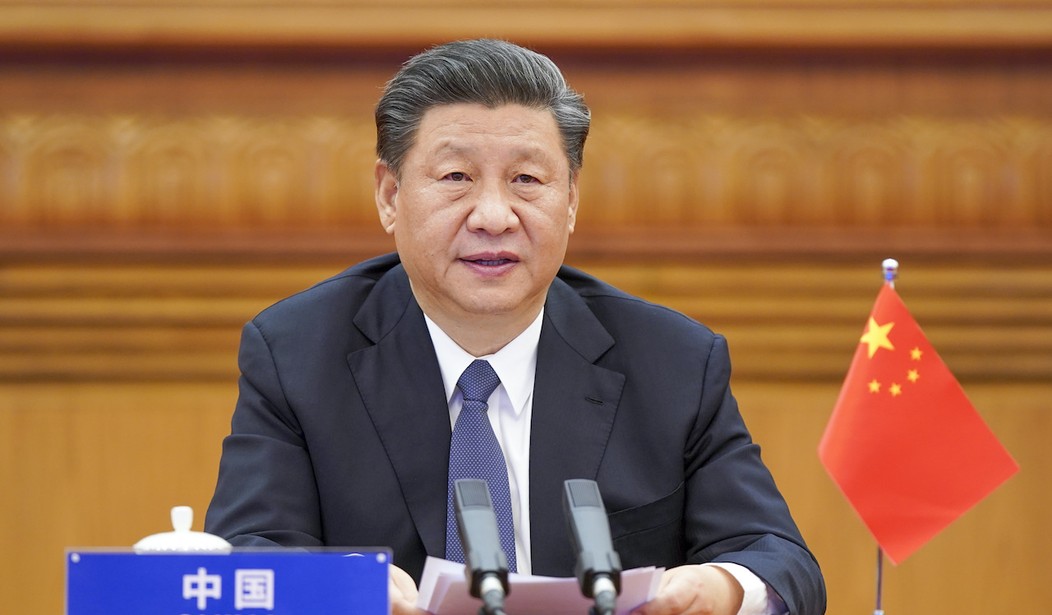Since 1985, the first year for which the Census Bureau has posted this nation's bilateral merchandise trade deficits on its website, the United States has accumulated $5.5 trillion in trade deficits with China.
No other nation comes close.
In 2019, America's seven top trading partners -- when measured by the total dollar value of the bilateral trade in goods -- were Mexico ($614.5 billion), Canada ($612.4 billion), China ($558.9 billion), Japan ($218.3 billion), Germany ($187.8 billion), South Korea ($134.4 billion) and the United Kingdom ($132.3 billion).
By far, however, the least balanced relationship -- both last year and in recent decades -- has been with China.
In the 35 years from 1985 through 2019, according to Census Bureau data, the United States ran a cumulative merchandise trade deficit with China of $5,501,227,400,000.
Among the seven nations that were our leading trading partners as of 2019, the second-largest cumulative deficit over that 35-year period was the $2,240,119,400,000 deficit the United States ran with Japan.
Thus, the cumulative trade deficit with China over the last 35 years was almost 2.5 times as large as the cumulative trade deficit with Japan.
The cumulative trade deficits with Mexico ($1,276,017,400,000), Germany ($1,222,887,800,000), Canada ($1,065,139,400,000), South Korea ($410,304,300,000) and the United Kingdom ($33,598,300,000) were much smaller.
In fact, in 16 of the 35 years on record, the United States actually ran a merchandise trade surplus with the United Kingdom.
But China is an outlier.
Of the approximately $558.9 billion in goods traded between the United States and China last year, only $106.6 billion were exported by the United States, while $452.2 billion were imported.
Recommended
The result: The United States ran a $345.6 billion merchandise trade deficit with China.
America's next-largest merchandise trade deficit last year was with our top trading partner, Mexico. But that deficit was only $101.8 billion -- less than one-third the $345.6 billion deficit with China.
The United States ran only a $27 billion trade deficit in 2019 with our other neighbor and second-largest trading partner, Canada. America's $345.6 billion trade deficit with China was more than 12 times the trade deficit with Canada.
Despite having much smaller economies and populations than China, both Mexico and Canada managed to buy far more American-made goods than China did.
China, according to the CIA World Factbook, has the largest GDP in the world ($25,360,000,000,000). Mexico's ($2,463,000,000,000) is less than one-tenth that size, and Canada's ($1,774,000,000,000) is less than one-fourteenth.
China, meanwhile, has by far the world's largest population (1,394,015,977). Mexico's population (128,649,565) is less than one-tenth that size, and Canada's (37,694,085) is about one-thirty-seventh that size
It is a fact, then, that even though China has both a GDP and a population that is about 10 times larger than Mexico's, Mexico, in 2019, purchased almost 2.5 times the American-made goods when measured in dollar value ($256.4 billion) as China did ($106.6 billion).
Similarly, even though China has a GDP that is about 14 times larger than Canada's and a population that is about 37 times larger, Canada purchased about 2.7 times the American-made goods ($292.7 billion) that China did in 2019 ($106.6 billion).
Can geographical proximity explain all of that disparity?
The United States normalized relations with China in 1979 but did not grant China permanent normal trade relations until more than 20 years later.
"President Bill Clinton and China's then-leader Jiang Zemin both came to see benefits in expanding bilateral economic ties, including working together to bring China into the WTO (World Trade Organization)," explains the Congressional Research Service.
"On October 10, 2000, Clinton signed into law P.L. 106-286, granting China permanent normal trade relations and paving the way for China to join the WTO, which it did in December 2001," says the Congressional Research Service.
What has been the trajectory of U.S. economic relations with China?
In 1985, the first year reported by the Census Bureau, the U.S. merchandise trade deficit with China was $6 million. In 2001, when China joined the WTO, it was $83 billion.
The next year, the U.S.-China trade deficit jumped to $103 billion. By 2005, it was $202 billion. By 2012, it was $315 billion.
In 2018, it peaked at $419 billion.
What is the United States buying from China?
In 2019, according to the Census Bureau, the top six imports American consumers purchased from China were "cell phones and other household goods" ($64.5 billion); "computers" ($42.3 billion); "toys, games, and sporting goods" ($26.5 billion); "apparel, textiles, nonwool or cotton" ($24.4 billion); "telecommunications equipment" ($24.4 billion)" and "computer accessories" ($18.7 billion).
The State Department's 2019 report on human rights in China begins with these words: "The People's Republic of China (PRC) is an authoritarian state in which the Chinese Communist Party (CCP) is the paramount authority. CCP members hold almost all top government and security apparatus positions."
But this authoritarian state run by the Communist Party provided the labor to produce tens of billions of dollars in cell phones and computers that were sold last year in the United States of America.
America ought to deliver a very simple message to the authoritarians in Beijing: As long as you are not a free country, you will not be able to freely sell your products here.
Terence P. Jeffrey is the editor in chief of CNSNews.com.

























Join the conversation as a VIP Member